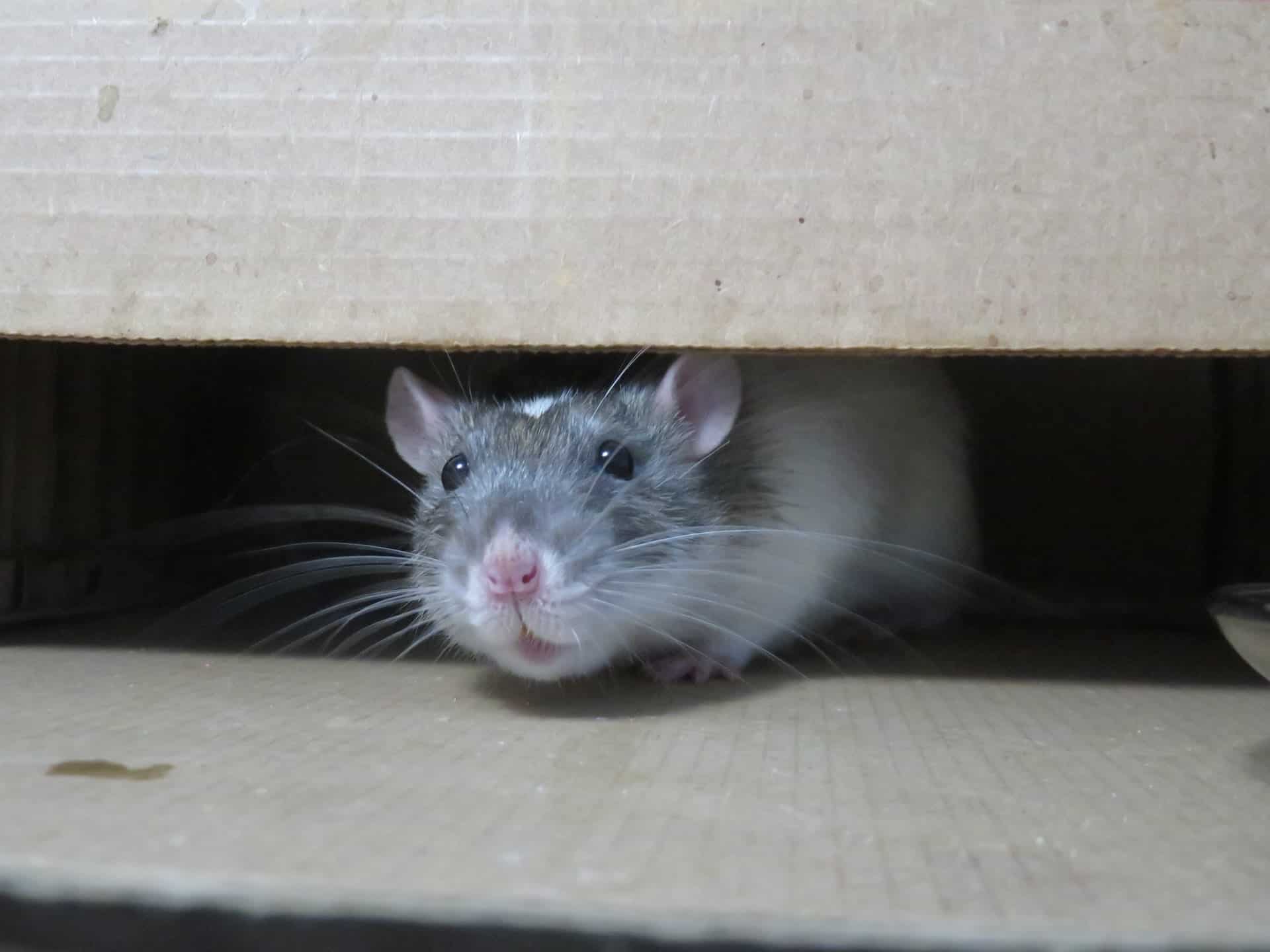Many believe that rats are only a problem in urban drainage systems, but this is not true. Rats can live in any drain system outside the city limits. Many drain pipes can provide these pests with warmth and shelter. More importantly, people carelessly throw food leftovers into these places, enough for rats to survive.
Signs of a Rat-infested Sewer
Like all animals, rats don’t like hunger. They will venture out to find food. Once they have access to the sewer pipes, often due to cracks, it’s only a matter of time before they find their way into your home.
Below are the common signs that rats could be having a party down your sewer.
1. Rat Droppings
Drain rats do not have a preferred area where they can relieve themselves. If they need to do it, they will do so anywhere.
Rat droppings are often black and pellet-shaped; you can find them in places where sewer rats are likely to hide. These include the drawers in your bathroom and the cabinets installed under the sink.
2. Gnawed Holes
Holes in your walls indicate something is chewing on your wallpaper or wall padding. Rats are excellent scavengers who eat anything their teeth can bite into, including paper and thin wood.
3. Night Scratches
Rats are nocturnal creatures, so you should hear them scratching, squeaking, and moving around inside your house when the lights are out. This is especially true if they have made their way to your basement. Although it will initially be a fleeting sound, once the rats have nested and reproduced, you will soon hear more mysterious noises.
7 Ways To Keep Rats Away From Your Sewers
Here are some things you can do to prevent rats from climbing into your drain pipes.
1. Inspect the Source
The first step to removing rats from your drainage system is to check their nearest entry source. Begin by inspecting your drains for cracked or damaged pipes, brickwork gaps or holes, and scraping signs on the sewer walls.
2. Install Sewer Blockers
After finding the small cracks in your pipes, you must fix them. Refer them to an experienced plumber who will likely recommend that you place a blocker in the sewage system to trap the older rats that frequent the area.
If they can’t get through the pipes, these rodents may try to tunnel their way into your home. Block their access point by building a patio or a row of stones flush against the wall.
3. Remove Food Source
Rats will only live in places where there is food and water. If you remove these sources, says an Aurora plumbing specialist, your rodent friends will soon have to leave and move on. Source removal means that you must be mindful of the things you flush down your drains and keep the area around them clean so as not to attract pests.
4. Trim the Branches
Rats can climb up from the ground onto nearby trees to get inside your home. Trim the branches at least four feet from the utility wires to keep the rodents off your roof.
5. Install Rat Traps
Rat baits use toxic substances that could injure pets and other animals. They are also time-consuming to set up, although they can produce immediate results. If you plan to trap rats in your drains, hire a professional.
6. Maintain Your Home
Seal cracks in flooring and walls to stop rats from entering your home. Any hole less than one-quarter inch in diameter is enough for these pests to dig through using their sharp teeth. However, patched-up openings are unattractive to many of them.
7. Consult a Professional Plumber
Rats will find a way to enter your home through pipes outside your home. This will be difficult to determine, especially if you believe your plumbing is in excellent condition. Professional plumbers and a reputable pest control company can help out in this instance. They can use the most sophisticated methods of detecting rats in your home and devise a plan to eliminate the problem without disrupting your daily activities.
Key Takeaway
While rats are common residents in many sewer systems, they can pose a real danger when they enter your homes. Nevertheless, there are ways to prevent this from happening. An important first step is to become fully conscious of what you push down the kitchen drain. Don’t throw leftovers in the sink; they will clog your pipe and nourish the sewer rats.
Your plumbing system’s regular maintenance is equally important. Rats use cracked or damaged water pipes as shelter and access points. A licensed plumber should inspect these periodically to fix any potential damage before they worsen. Rodents will find a well-maintained piping system unattractive soon enough.

